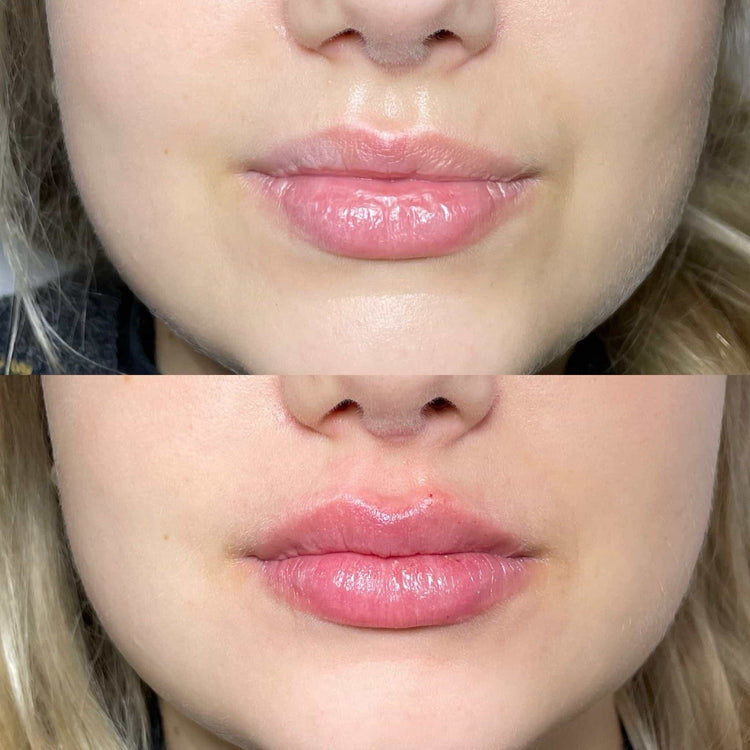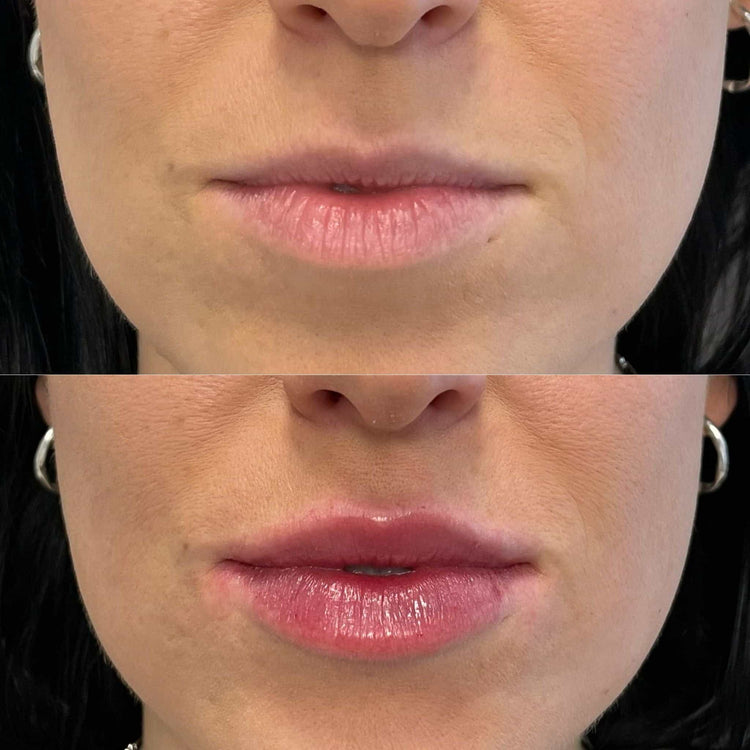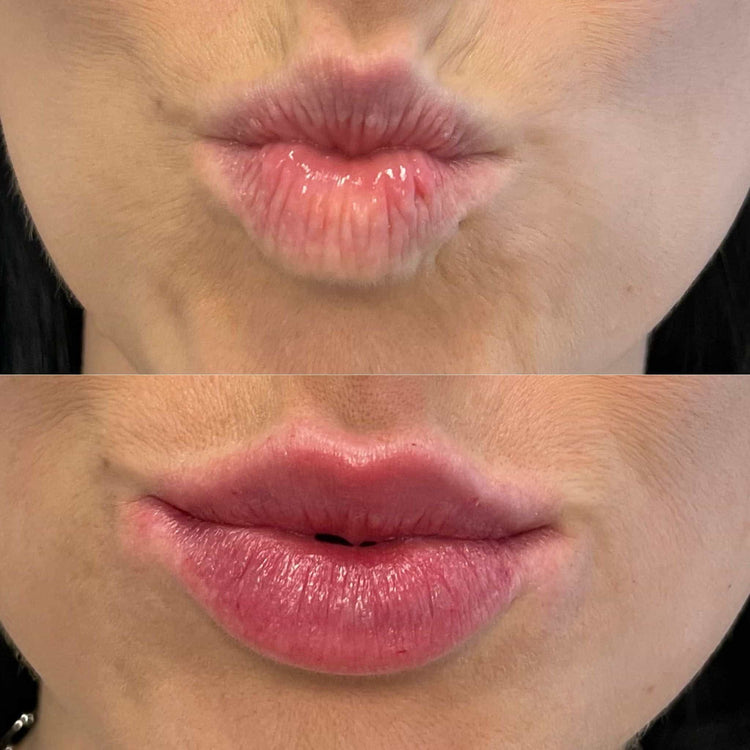Understanding Filler Swelling
Injectables like dermal fillers are becoming increasingly popular for facial contouring and volumizing, but swelling and redness after treatment can be concerning. Understanding why this happens and how to manage it effectively is essential for achieving the best possible results and ensuring a smooth recovery.
Common Causes of Swelling
Filler swelling is a common occurrence following dermal filler injections. It’s caused by the body’s natural inflammatory response to the foreign substance introduced during the procedure. The injected filler material can irritate surrounding tissues, prompting them to retain fluid, resulting in temporary swelling and redness.
Several factors can influence the degree and duration of swelling. These include the type and amount of filler used, the injection site, individual sensitivity, and pre-existing medical conditions.
While typically mild and temporary, swelling can be managed with a few strategies. Applying cold compresses to the treated area for 15-20 minutes at a time can help reduce inflammation. Over-the-counter pain relievers like ibuprofen or acetaminophen may also alleviate discomfort.
It’s important to avoid touching or rubbing the injection site as this can exacerbate swelling and potentially cause bruising.
Most individuals experience significant improvement within a few days to a week. However, in some cases, swelling may persist longer, requiring additional measures such as gentle massage or prescription medications prescribed by your physician.
Consulting with your injector for personalized advice on managing post-filler swelling is crucial for ensuring optimal healing and achieving the desired aesthetic outcome.
Duration of Swelling
Filler swelling is a common occurrence following dermal filler injections. It’s caused by the body’s natural inflammatory response to the foreign substance introduced during the procedure. The injected filler material can irritate surrounding tissues, prompting them to retain fluid, resulting in temporary swelling and redness.
Several factors can influence the degree and duration of swelling. These include:

- The type and amount of filler used
- The injection site
- Individual sensitivity
- Pre-existing medical conditions
While typically mild and temporary, swelling can be managed with a few strategies. Applying cold compresses to the treated area for 15-20 minutes at a time can help reduce inflammation. Over-the-counter pain relievers like ibuprofen or acetaminophen may also alleviate discomfort.
It’s important to avoid touching or rubbing the injection site as this can exacerbate swelling and potentially cause bruising.
Most individuals experience significant improvement within a few days to a week. However, in some cases, swelling may persist longer, requiring additional measures such as gentle massage or prescription medications prescribed by your physician.
Consulting with your injector for personalized advice on managing post-filler swelling is crucial for ensuring optimal healing and achieving the desired aesthetic outcome.
Managing Post-Filler Swelling and Redness
Understanding how to manage post-filler swelling and redness is essential for achieving optimal results after dermal filler treatments. Swelling, a natural response to the introduction of a foreign substance, typically resolves within a few days to a week, but certain factors can influence its duration. By implementing simple strategies and following your injector’s advice, you can minimize discomfort and ensure a smooth recovery process.
Cold Compresses
Applying cold compresses is a common and effective method for managing post-filler swelling and redness.
- Cold compresses constrict blood vessels, which helps to reduce inflammation and swelling.
- They can be applied to the treated area for 15-20 minutes at a time, several times a day.

It’s important to wrap ice in a towel or use a gel pack to avoid direct contact with skin, as this can cause irritation.
Elevation
Filler swelling is a common occurrence following dermal filler injections. It’s caused by the body’s natural inflammatory response to the foreign substance introduced during the procedure. The injected filler material can irritate surrounding tissues, prompting them to retain fluid, resulting in temporary swelling and redness.
Several factors can influence the degree and duration of swelling. These include:
- The type and amount of filler used
- The injection site
- Individual sensitivity
- Pre-existing medical conditions
While typically mild and temporary, swelling can be managed with a few strategies. Applying cold compresses to the treated area for 15-20 minutes at a time can help reduce inflammation. Over-the-counter pain relievers like ibuprofen or acetaminophen may also alleviate discomfort.
It’s important to avoid touching or rubbing the injection site as this can exacerbate swelling and potentially cause bruising.
Most individuals experience significant improvement within a few days to a week. However, in some cases, swelling may persist longer, requiring additional measures such as gentle massage or prescription medications prescribed by your physician.
Consulting with your injector for personalized advice on managing post-filler swelling is crucial for ensuring optimal healing and achieving the desired aesthetic outcome.
Understanding how to manage post-filler swelling and redness is essential for achieving optimal results after dermal filler treatments. Swelling, a natural response to the introduction of a foreign substance, typically resolves within a few days to a week, but certain factors can influence its duration. By implementing simple strategies and following your injector’s advice, you can minimize discomfort and ensure a smooth recovery process.
Arnica Gel
Arnica gel is a popular natural remedy often recommended for managing post-filler swelling and redness. Arnica, derived from the arnica montana plant, has anti-inflammatory properties that may help reduce inflammation and bruising.
While research on its effectiveness for filler swelling is limited, many individuals find it helpful. Arnica gel can be applied topically to the treated area several times a day.
It’s important to choose a pure arnica gel without added fragrances or irritants.
Over-the-Counter Pain Relievers
Injectables like dermal fillers are becoming increasingly popular for facial contouring and volumizing, but swelling and redness after treatment can be concerning. Understanding why this happens and how to manage it effectively is essential for achieving the best possible results and ensuring a smooth recovery.
Filler swelling is a common occurrence following dermal filler injections. It’s caused by the body’s natural inflammatory response to the foreign substance introduced during the procedure. The injected filler material can irritate surrounding tissues, prompting them to retain fluid, resulting in temporary swelling and redness.

Several factors can influence the degree and duration of swelling. These include the type and amount of filler used, the injection site, individual sensitivity, and pre-existing medical conditions.
While typically mild and temporary, swelling can be managed with a few strategies. Applying cold compresses to the treated area for 15-20 minutes at a time can help reduce inflammation. Over-the-counter pain relievers like ibuprofen or acetaminophen may also alleviate discomfort.
It’s important to avoid touching or rubbing the injection site as this can exacerbate swelling and potentially cause bruising.
Most individuals experience significant improvement within a few days to a week. However, in some cases, swelling may persist longer, requiring additional measures such as gentle massage or prescription medications prescribed by your physician.
Consulting with your injector for personalized advice on managing post-filler swelling is crucial for ensuring optimal healing and achieving the desired aesthetic outcome.
Understanding how to manage post-filler swelling and redness is essential for achieving optimal results after dermal filler treatments. Swelling, a natural response to the introduction of a foreign substance, typically resolves within a few days to a week, but certain factors can influence its duration. By implementing simple strategies and following your injector’s advice, you can minimize discomfort and ensure a smooth recovery process.
Preventing Excessive Swelling
Dermal fillers have become increasingly popular for enhancing facial contours, but temporary swelling and redness after treatment are common occurrences. Understanding the reasons behind this reaction and employing effective management strategies is crucial for achieving optimal results and ensuring a comfortable recovery.
Choosing a Qualified Provider
Choosing a qualified provider is paramount when considering dermal filler treatments. Look for an experienced and licensed medical professional with extensive training in injectables, ideally board-certified in a relevant field like dermatology or plastic surgery.
Inquire about their experience with the specific type of filler you’re interested in and review before-and-after photos to assess their aesthetic style and previous outcomes. Don’t hesitate to ask questions about their sterilization practices, post-treatment care instructions, and potential risks and complications.
Remember, your safety and desired outcome are top priorities. Taking the time to thoroughly research and select a skilled and reputable provider is essential for achieving a successful and satisfying filler experience.
Avoiding Alcohol Consumption Before and After Treatment
Avoiding alcohol consumption before and after dermal filler treatment is important for several reasons:
Alcohol can interfere with the body’s ability to heal properly, potentially increasing swelling, bruising, and the risk of complications.
It can also thin the blood, making you more prone to bleeding and extending the time it takes for your body to clot.
Furthermore, alcohol can lower inhibitions and make it more likely that you’ll engage in activities that could irritate the treated area or lead to injury.
Following Instructions Carefully
Following post-filler instructions carefully is crucial for minimizing swelling, redness, and promoting optimal healing. These instructions will typically include recommendations on:
- Applying cold compresses
- Avoiding touching or rubbing the treated area
- Elevating your head while sleeping
- Using over-the-counter pain relievers as needed
- Skipping strenuous activities or excessive sun exposure
Adhering to these guidelines helps reduce inflammation, prevent infection, and ensure a smoother recovery process. Remember that every individual responds differently to filler treatments, so communication with your injector is essential for personalized advice and addressing any concerns you may have.
When to Seek Medical Attention
When in doubt about your health, it’s always best to err on the side of caution and seek medical attention.
Here are some situations where it’s important to consult a doctor after a dermal filler treatment:
* **Severe or Unrelenting Swelling:** If swelling is excessive, doesn’t improve after a week, or interferes with your daily activities, seek medical advice.
* **Signs of Infection:** Watch for redness that spreads beyond the treated area, warmth, pain, pus, or fever. These could indicate an infection requiring prompt treatment.
* **Allergic Reaction:** If you experience any signs of an allergic reaction, such as hives, itching, difficulty breathing, or swelling of the face or throat, seek immediate medical attention.
* **Vascular Complications:** Seek medical care immediately if you notice any discoloration (like a bluish hue), numbness, pain, or loss of sensation around the injection site, as these could indicate a vascular complication.
* **Unexpected Changes:** Any significant changes in your appearance, such as asymmetry or unusual bumps or lumps, should be promptly addressed with your injector or doctor.
Remember, open communication with your injector and healthcare provider is essential for ensuring the best possible outcome after any medical procedure.
Get the pout you’ve always wanted, book with Dr. Laura Geige at It’s Me & You Clinic
- Thc Seltzer In Hawaii HI - May 28, 2025
- What Are The Benefits Of CBD Gummy Edibles For Relaxation - May 28, 2025
- Skin Treatment & Skincare Consultations Near Milford, Surrey - May 28, 2025

